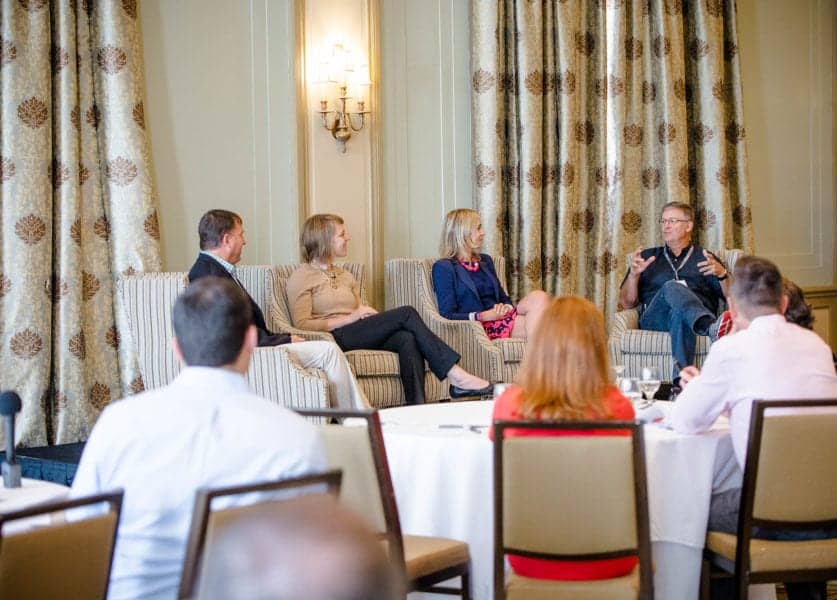By Emma Wilkinson | Job Captain
October 24th, 2017

Confidential Client. Photography © Eric Laignel.
In late August, we were fortunate to attend a summit hosted by Metropolis Magazine and Sunbrella focusing on designing workplaces that foster wellness and a happy, engaged workforce. As designers, we walked away with a renewed purpose to make wellness an integral part of how we conceive the workplace.

One of the break-out panel discussions. Photo courtesy Sunbrella®

One of the break-out panel discussions. Photo courtesy Sunbrella®

A sign welcoming guests to the event. Photo courtesy Sunbrella®
We were fortunate to hear from keynote speaker Mo Gowdat of Google share his approach to happiness. His account and perspective was an important reminder that when we design spaces which allow occupants to experience a balance between expectation and reaction, workers can have healthier and more productive shared experiences. A minimalist design approach can help neutralize expectation and perception.
Multiple studies examining the larger impact that small environmental changes have on humans highlight the growing benefits of biophilia in the workplace. Exploring the measurable and tangible effects of biophilia on the human spatial experience provides the architectural community an opportunity to push the boundaries of our roles as designers. The evidence and results of these studies reinforces the obligation, that we, as designers, provide healthy spaces for our clients as well as adhere to the financial business case of incorporating biophilic design features.
Productivity was the topic of another engaging discussion. At one organization, encouraging employees minds to wander allows creative ideas to advance to the forefront, resulting in thoughtful and thorough work. Meanwhile, the same organization may also require heads down work from employees to ensure deadlines and quotas are met. While the discussion around productivity and its range of meanings may seem divergent, there was general agreement that success often involves accommodating a combination of workstyles: focus, unfocused, rest, connect, and more. In order to design for a productive workforce, we must help our clients understand what success looks like for their organization.
Another session that stood out was the discussion on placemaking and its importance in facilitating a happy, connected and productive workforce. One panelist’s analysis of the benefits of green roofs provided compelling data about crop cultivation made possible by green roofs as well as the potential personal growth of those who contribute to these spaces – whether its learning to grow, enjoying edible crops from a rooftop garden, or even establishing a meaningful connection to nature .
The experience and knowledge gained from this summit invigorated our views of the design opportunities available. As designers and strategists, we often approach design with an additive mindset, only considering what we can add to a space for it to achieve a certain goal. However, as designers we should reconsider the starting line of design; happy, biophilic, healthy spaces should become the foundation on which our designs are created. Combining data with lived experiences provides us the opportunity to help our clients prioritize these fundamental issues central to design.

